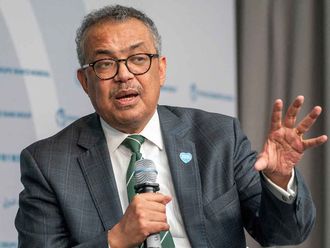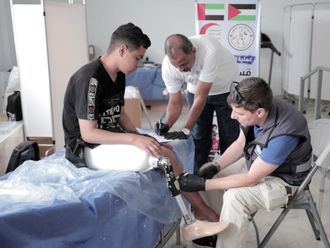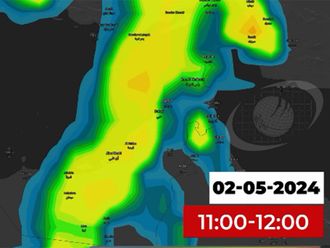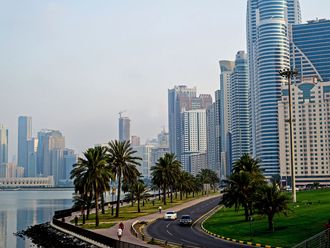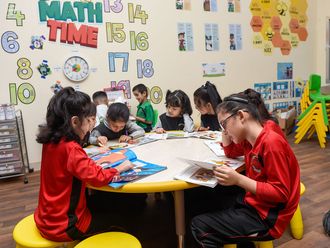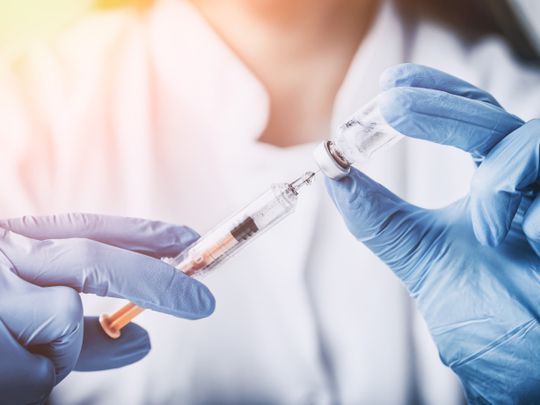
Dubai: A vaccine to combat coronavirus - which has so far affected 100,000 globally with over 3,000 fatalities - won’t be available until the end of the year say virologists.
The Coalition for Epidemic Preparedness Innovations (CEPI), a global alliance financing and coordinating the development of vaccines against emerging infectious diseases, has pledged US$2 billion towards research and development of a Covid 19 vaccine.
Of nine pharmaceutical companies racing towards creating a vaccine, some have announced the first phase of clinical trials as early as the beginning of April, but considering the long process of trials, approvals and mass production it’s going to take time for the vaccine to reach people globally.

DJ Hamblin Brown a UK-based doctor who was running his own clinic in Beijing before returning to the UK, said, “The vaccine will take least a year - probably nearer 18 months - and possibly never. I am not a virologist, but I understand that the coronavirus vaccines are not straightforward.”
Dr Brown further added that the virus was most likely here to stay in the community and could become endemic given its virulent contagiousness.
Race for the Vaccine
According to the Centre for Disease Control (CDC), within a month of the viral outbreak by January 10, Chinese scientists put out the genomic sequence of the virus from the earliest samples in the public domain, and since then they have also sequenced nearly two dozen mutations as the virus evolves, which is a record according to global virologists.

Dr Sundar Elayaperumal, Specialist Microbiologist from Burjeel Hospital and also a member of the American Society of Microbiology said, “There are two types of coronavirus, human and zoonotic (transmitted through animals). These viruses are typically spherical in shape with sharp spikes or protrusions. These spikes latch onto human cells, then undergo a structural change that allows the viral membrane to fuse with the cell membrane. The viral genes can then enter the host cell to be copied, producing more viruses. The virus also is given to frequent mutations. Frequent mutations can happen during viral divisions.
“The processes involved after the scientists provided the genomic sequence was to grow the virus in the laboratory in a cell or tissue culture. This genome of virus is then inserted into an organism (bacteria or Yeast through recombinant technology) and the vaccine is made.”
“When an organism’s immune system encounters a foreign molecule (typically a protein) for the first time, an antibody is produced. An antigen is defined as a substance that binds to specific antibodies in our bodies, which in the human body are used to find and neutralise any potentially harmful foreign substances in the bloodstream,” added Elayaperumal.
Intensive testing involved

Dr Kavita Diddi, specialist microbiologist at Prime Hospital said, “As per the guidelines of the Centre for Disease Control there are various stages involved in the development of the vaccine. The vaccine needs to be tested for short term and long term impact on the human immune system. Short term could be six months and long term could be 1-2 years. Only after that can the vaccine be sent for FDA approvals and be mass produced.”
Stages of Vaccine development according to the Centre for Disease Control
- Exploratory stage – here the scientists study the genomic sequence, isolate the DNA, explore the virus and its mutations by growing it in the laboratory directly from samples of infected persons
- Pre-clinical stage: Pre-clinical studies use tissue-culture or cell-culture system and animal testing to assess safety of the candidate vaccine and its immunogenicity or ability to provoke an immune response. These studies give researchers an idea of the cellular responses they might expect in humans. They may also suggest a safe starting dose for the next phase of research as well as a safe method of administering a vaccine.
- Clinical development: Here the samples are tested in a phased manner. During Phase I, the trial vaccine is tested on small group of volunteers ( 20-80 subjects). The goal of this phase is to assess the safety of the candidate vaccine and to determine the type and extent of immune response that it provokes in the subjects.
- In Phase II, the trial vaccine is tested on a larger group of several hundred’s individuals who have certain characteristics such as age and physical health similar to those for whom the new vaccine is intended. The goal of this phase to study the trial vaccine’s safety, schedule of immunization and method of administering it.
- In Phase III, the vaccine is given to thousands of people and tested for efficacy and safety.
- FDA Approval : After a successful Phase III trial, the vaccine developer will submit a Biologics License Application to the Food and Drug Administration (FDA). After the license approval the FDA continues tro monitor the production of the vaccine, including the inspection of facilities and a review of the manufcaturer’s tests of potency, safety and purity of the batches manufactured.
- Post License Monitoring of Vaccines: This is done by various methods. These include Phase IV trials ( conducted by the manufacturer to test the vaccine’s safety, efficacy and other potential uses, the Vaccine Adverse Event Reporting Sysetm and the Vaccine Safety Datalink.
- Dr Elayperumal further observed: “There is a likelihood that in cases of a global health crisis the FDA might expedite the Clinical trials, but even then at best the vaccine is likely to be available to the public at large only by the end of 2020. As for price control, global agencies like the Red Cross, the Red Crescent and the United Nations might procure the vaccine for mass distribution or at least freeze the price at a certain level.”



